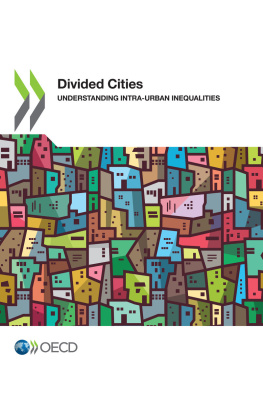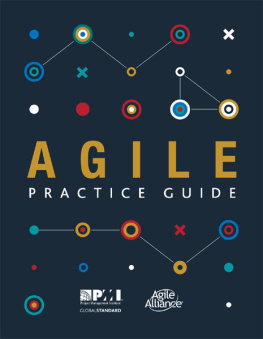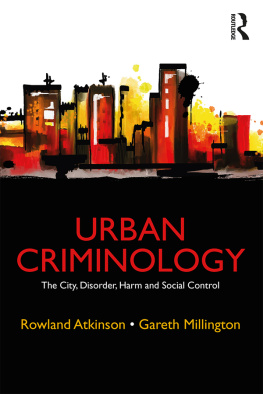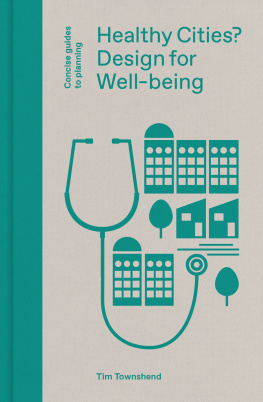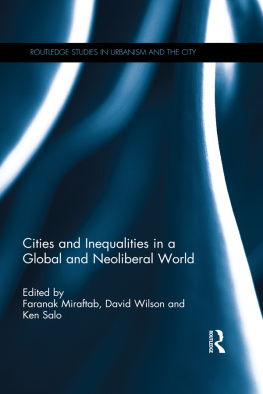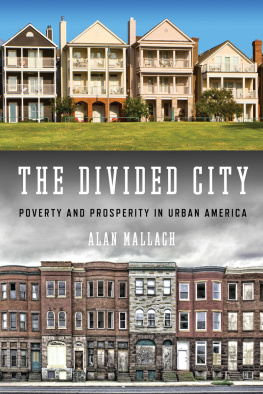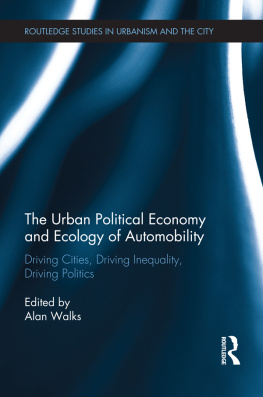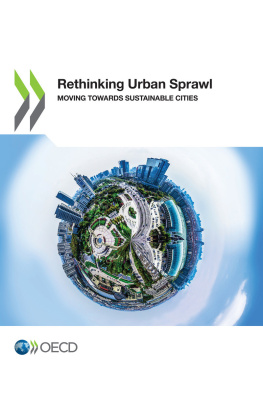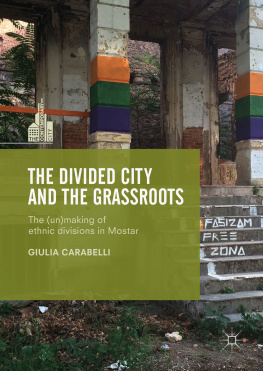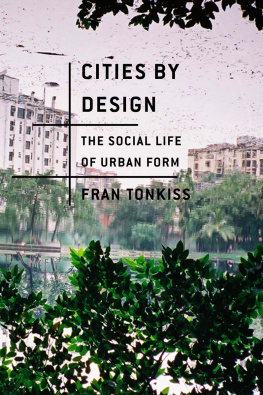coll. - Divided cities : understanding intra-urban inequalities
Here you can read online coll. - Divided cities : understanding intra-urban inequalities full text of the book (entire story) in english for free. Download pdf and epub, get meaning, cover and reviews about this ebook. City: Paris, year: 2018, publisher: OECD Publishing, genre: Politics. Description of the work, (preface) as well as reviews are available. Best literature library LitArk.com created for fans of good reading and offers a wide selection of genres:
Romance novel
Science fiction
Adventure
Detective
Science
History
Home and family
Prose
Art
Politics
Computer
Non-fiction
Religion
Business
Children
Humor
Choose a favorite category and find really read worthwhile books. Enjoy immersion in the world of imagination, feel the emotions of the characters or learn something new for yourself, make an fascinating discovery.
Divided cities : understanding intra-urban inequalities: summary, description and annotation
We offer to read an annotation, description, summary or preface (depends on what the author of the book "Divided cities : understanding intra-urban inequalities" wrote himself). If you haven't found the necessary information about the book — write in the comments, we will try to find it.
Divided cities : understanding intra-urban inequalities — read online for free the complete book (whole text) full work
Below is the text of the book, divided by pages. System saving the place of the last page read, allows you to conveniently read the book "Divided cities : understanding intra-urban inequalities" online for free, without having to search again every time where you left off. Put a bookmark, and you can go to the page where you finished reading at any time.
Font size:
Interval:
Bookmark:
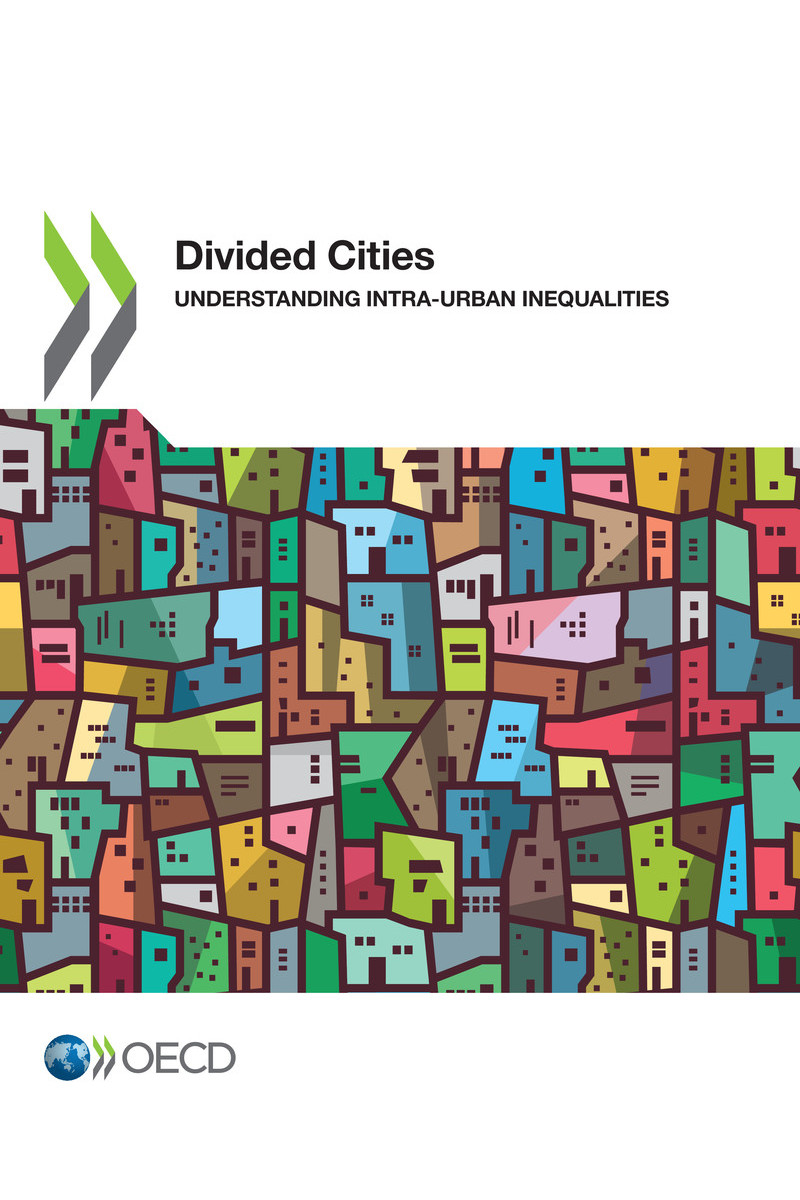
OECD (2018), Divided Cities: Understanding Intra-urban Inequalities , OECD Publishing, Paris.
http://dx.doi.org/10.1787/9789264300385-en
Cities are places of opportunity. In cities people can benefit from work and training opportunities, proximity to other people and physical access to many high-level services that are important for well-being. When cities are well-organised and inclusive, they allow people to access opportunities, regardless of their location within the city.
However, cities are often divided . In divided cities there are gaps and barriers that produce exclusive spaces and concentrations of disadvantage. Inequality in access to high-quality services and economic opportunities across social groups can exacerbate existing societal disparities. In this context, it becomes relevant to understand how social groups are organised within cities and how this relates to intra-urban inequalities.
International comparisons are helpful for putting measurements of such inequalities into perspective. Of particular relevance is the study of socio-economic spatial segregation, a situation where people of a similar background in terms of income, culture, country of origin, etc. live concentrated in certain parts of a city and clearly separated from other groups. Segregation can have both positive and negative sides, but it is deemed to be especially problematic when it is involuntary and when it leads to few interactions among the resident groups and less access to opportunities.
While segregation is a challenge in cities across the globe, international evidence and a systematic reflection on the different types of segregation and inequalities in access to opportunities is missing. As a response to the need for international comparable studies on intra-urban inequalities, the OECD, in partnership with the Gran Sasso Science Institute (GSSI), launched in 2016 a project to better understand the different dimensions of inequality within cities and metropolitan areas throughout OECD countries.
This report was realised as part of a larger effort of the Regional Development Policy Committee and its Working Party on Territorial Indicators and Working Party on Urban Policy to understand how to make cities more inclusive. Building on a previous report entitled Making Cities Work for All (2016), it provides an assessment of intra-urban inequalities in terms of income, migrant status and access to public transport in a subset of metropolitan areas in the OECD and beyond. Several indicators presented in this report at the scale of metropolitan areas will be included in the OECD Metropolitan Database and will contribute to making robust international comparisons of inequalities and segregation across cities in OECD countries.
The five authored chapters provide new insights on cross-cutting issues with respect to inequality and segregation from a multi-dimensional perspective. They examine, for example, the role of governance structures and housing types as determinants of segregation; the patterns of concentration of migrants across neighbourhoods; the role of public transport accessibility in widening intra-city inequalities; and expected path dependency on outcomes related to segregation. The report also discusses methodological alternatives for measuring different dimensions of inequality and segregation across cities and the limitations of these measurements.
This publication was produced in the OECD Centre for Entrepreneurship, SMEs, Regions and Cities (CFE), led by Lamia Kamal-Chaoui, Director, as part of the programme of work of the Regional Development Policy Committee (RDPC). The project was supported by the Gran Sasso Science Institute (Italy).
The publication has been co-ordinated and edited by Paolo Veneri, Acting Head of the Statistics and Territorial Analysis Unit under the supervision of Rudiger Ahrend, Head of the Economic Analysis, Statistics and Multi-level Governance Section of CFE. Ana Moreno Monroy, Policy Analyst, also helped to edit the final report. Chapter 1 was authored by Ana Moreno Monroy (OECD) and Paolo Veneri (OECD). Chapter 2 was authored by Andre Comandon (University of California, Los Angeles), Michiel Daams (University of Groningen), Miquel-ngel Garcia-Lpez (Autonomous University of Barcelona and Barcelona Institute of Economics, Spain) and Paolo Veneri (OECD). Chapter 3 was authored by Ana Moreno-Monroy (OECD). Chapter 4 was authored by Fabrizio Natale, Marco Scipioni and Alfredo Alessandrini (Joint Research Centre of the European Commission). Chapter 5 was authored by Ludovica Gazz (University of Chicago). Chapter 6 was authored by Maarten van Ham (Delft University of Technology and University of St Andrews), Tiit Tammaru (University of Tartu) and Heleen J. Janssen (Delft University of Technology). Additional input was provided by Kevin Fourrey (University of Caen Normandy, France) for Box 2.3 and by Davide Luca and Mairie Carroline Magante (Gran Sasso Science Institute, Italy) for Box 4.3. Janine Treves provided editorial comments. Cicely Dupont-Nivore led the publication process. Eleonore Morena prepared the manuscript for publication.
Special thanks are due to the team in the Gran Sasso Science Institute who accompanied the realisation of the report, in particular Eugenio Coccia, Alessandra Faggian and Francesco Chiodelli. Antonio Calafati (Academy of Architecture, Universit della Svizzera Italiana, Switzerland) contributed to the definition of the project in its initial stages. Authors gratefully acknowledge comments and suggestions by OECD colleagues, especially Karen Maguire, Lorena Figueiredo, Tamara Krawchenko and Kate Brooks. Additional comments were received also by Sylvie Marchand (INSEE, France), Jean-Michel Floch (INSEE, France), and Ksenia Shadrina (Economic Development Administration, Department of Commerce, United States).
Font size:
Interval:
Bookmark:
Similar books «Divided cities : understanding intra-urban inequalities»
Look at similar books to Divided cities : understanding intra-urban inequalities. We have selected literature similar in name and meaning in the hope of providing readers with more options to find new, interesting, not yet read works.
Discussion, reviews of the book Divided cities : understanding intra-urban inequalities and just readers' own opinions. Leave your comments, write what you think about the work, its meaning or the main characters. Specify what exactly you liked and what you didn't like, and why you think so.

